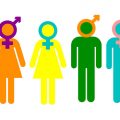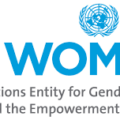By Rodion Ebbighausen
Vietnam finds itself alongside countries like China and India when it comes to skewed sex ratios. A traditional preference for boys, ultrasound tech and a two-child policy are all to blame. UN estimates suggest the demographic gap of men to women in the 20-39 age group will grow from the current 3.5% to about 10% by 2059Image: Bildagentur-online/AGF-Hermes/picture alliance
The shortage of women in Vietnam has become a regular topic of conversation at the dinner table. Even a few years ago, if a woman in her mid-20s was not yet married, her marriage prospects were one of the biggest concerns for her family. But many families’ concerns are now increasingly directed at their sons.
Questions like these are preoccupying their minds: Is his education enough? Does he earn enough? Does he know how to behave? If the answers to these questions are in the negative, then his prospects of finding a wife diminish.
There are already 1.2 million more boys than girls among Vietnamese under the age of 19, according to the 2019 census. Vietnam finds itself alongside countries like China and India when it comes to such skewed sex ratios.
The social consequences of this development are dramatic for men, who cannot find female life partners, as well as for women who are exposed to increased challenges as a result of being a contested “commodity.”
Traditional preference for boys
A 2018 study entitled “Gender Imbalance In Vietnam: Problems And Solutions” identifies several reasons for the imbalance of boys and girls. The imbalance is partly a result of society’s preference for boys, where traditionally, a female child is valued less than a male.
Is Vietnam set to replace China as the world’s factory?
Confucianism, which has a strong influence on Vietnamese society, calls for a strict separation of gender roles and the subordination of women to men.
When women marry in Vietnam, they usually join their husbands’ families and are thus “lost” to their own families.
Since the state doesn’t provide an adequate social safety net, parents depend on their sons to provide for them in their old age.
Impact of tech and two-child policy?
The widespread use of prenatal testing methods such as ultrasound imaging has also made it possible to determine the sex of the unborn child, despite the government’s 2003 ban on ultrasound testing for gender identification.
Today, as many as 83% of pregnant women know the sex of their child before birth, reported the United Nations Country Gender Equality Profile 2021. Ultrasounds, along with policies to curb population growth, have negatively influenced the country’s sex ratio. The Vietnamese government adopted a two-child policy in 1988, but it is not rigidly enforced.
Most families in the country want a son to continue their lineage. As a result, there has been an increase in the abortion of female fetuses, especially when it comes to a second or third pregnancy. The consequences for mothers are clear, said Thu Hong Khuat, director of the Institute for Social Development Studies in Hanoi.
“Vietnamese women are under extreme pressure to give birth to a son. If they don’t succeed, their husbands and families are likely to treat them badly, especially in rural areas,” she told DW.
Human trafficking, social instability on the rise
Contrary to what one might expect, the skewed sex ratio has not led to an improvement in the status or social standing of women in Vietnam.
Instead, they are increasingly becoming victims of “forced marriage, human trafficking and other forms of violence against women and girls,” according to the study “Gender Imbalance In Vietnam: Problems And Solutions” by Tran Thi Bich Ngoc and other authors.
In addition, there has been an increase in prostitution and other forms of sexual exploitation. At the same time, the risk of social unrest is on the rise as the number of socially and sexually frustrated men grows.These problems will continue to worsen, and the gender mismatch will grow, unless the government succeeds in reversing the trend.
The abortion of female fetuses has increased in Vietnam since ultrasound technology was introduced nationwide UN estimates suggest the population gap between men and women in the 20-39 age group will grow from the current 3.5% to about 10% by 2059. This means that, in purely mathematical terms, one in 10 men of marriageable age will not be able to find a wife.
Strong laws, but weak welfare state
A comprehensive package of measures is needed to resolve the problem, said Thu Hong Khuat, pointing out that the challenge at hand is nothing less than changing a centuries-old cultural norm. She stressed that it will require laws, education and a stronger welfare state.
Vietnamese woman seeks justice for Agent Orange victims
The Vietnamese parliament passed an equality law in 2006, and the 2013 constitution banned gender-based discrimination. The government is currently implementing the second 10-year plan to promote gender equality, the “National Strategy for Gender Equality 2021-2030.”
“There is a strong political will of the government in Vietnam to promote gender equality,” stressed Thu Hong Khuat. Public awareness of the problem has also increased significantly, she said. “Nowadays, people are aware that gender equality is a good thing, but culture and tradition are still very strong.”
However, she underlined that laws and public awareness alone aren’t enough. “Until we improve the social system, the social safety net, change cannot go very far,” she said, noting that children needed to be freed from the financial and material burdens involved in taking care of their parents in old age.
This would require, for instance, integrating more Vietnamese into the pension system. According to the International Labor Organization, just over a third of the population is currently part of the system.
This article was originally written in German.






